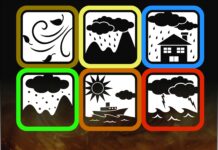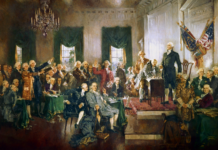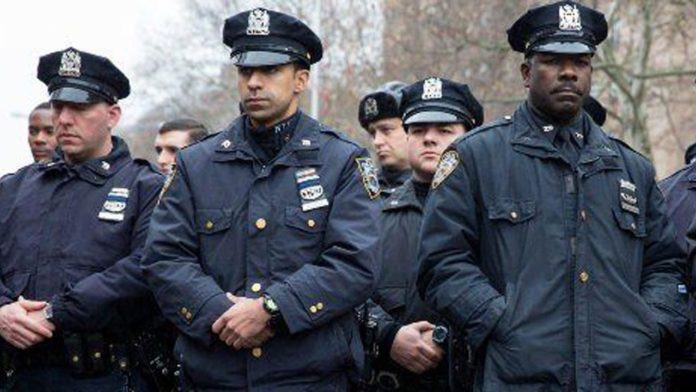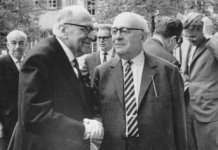The United States has some of the most professional, hardest working police officers in the world. According to the Bureau of Justice Statistics, the United States has around 62.9 million police interactions a year. Half (49%) are initiated by the police, 42% are traffic stops, and 38.5% are initiated by citizens calling the police for assistance.
 Only one in fifty police interactions involve police stopping someone on foot, but 24.5% of the people stopped on foot claim that the police did something ‘improper.’ Three percent of those who feel the police did something ‘improper’ file complaints, for a total of about 9,900 complaints a year, out of 1.45 million pedestrians stopped. Pedestrian stops cause far more complaints than do other forms of interactions.
Only one in fifty police interactions involve police stopping someone on foot, but 24.5% of the people stopped on foot claim that the police did something ‘improper.’ Three percent of those who feel the police did something ‘improper’ file complaints, for a total of about 9,900 complaints a year, out of 1.45 million pedestrians stopped. Pedestrian stops cause far more complaints than do other forms of interactions.
Only 1.4% of the people involved in police interactions report having force either threatened, or used, against them. The number of police killings varies widely by year, with only 73 in 2009, 847 in 2015, and 124 in 2017. 847 is the worst year on record, and even that is a tiny number, when compared to the total number of police interactions. Someone dies in only 0.00001% of police interactions (in the worst year on record), which is one millionth of a percent.
In the best year on record, only one in ten million police interactions ended with a loss of life. Interacting with the police is statistically almost as safe as is riding an airplane, and is safer than driving a car, or crossing the street.
As for racial disparities, they look very large when looking at the number of police interactions per capita compared to the overall ethnic blend of the country, but when crime rates for different ethnicities are included, the discrepancies go away completely. You would be hard pressed to find any statistical trend that follows more closely than do rates of police interactions by ethnicity, next to the crime rate by ethnicity. African Americans are slightly less apt than are white people to be killed by police officers in an interaction, but not by a statistically significant amount.
These are the numbers, and I provided the source, so the reader is welcome to look at the numbers for themselves. Interestingly, however, the numbers are hard to find in either the media, or the general public discourse. What we find, instead, are anecdotal stories, often with videos, along with the claim that the anecdotal evidence represents the norm rather than the exception. Police interactions are closely tracked, so we know what the norm is, but we are fed a false narrative based on anecdotal evidence. Interestingly, often the anecdotal evidence is not even very compelling.
Here is a video of a police officer supposedly overreacting to a woman who had her feet on a seat on a subway. This video went viral.
There are many such videos of supposed police brutality, but this one is particularly interesting as it shows innocent bystanders getting involved to try and prevent the police from making an arrest.
There are many things that this video does not tell us, but that are highly relevant to this specific case. One obvious question is why the police were on the subway in the first place. The police don’t routinely ride the subway, so we have to assume that the police were called onto the subway. Without knowing what this young lady did that caused someone else to call the police (who would then have had to coordinate with the transit system to intercept the train), we have no way of knowing whether or not the arrest was justified. All we know is that someone called the police, and then at some point after entering the train, the police asked a woman to put her feet down, asked her to exit the train once she refused, and then forced the woman off the train. The woman resisted, and was arrested. A bystander physically intervened on the woman’s behalf, and was also arrested. In the video, the police did nothing wrong, and how convenient it is that nothing that happened before the police officer was already on the train is shown.
There are many similar videos of supposed police brutality on YouTube. Here is one where the subject is very clearly resisting arrest. Two officers are not able to restrain the subject before a third officer steps in and forcefully subdues him. Once again, we know nothing of what happened before, or after, the portion of the video shown on YouTube. All we know is that a subject resisted arrest, and was forcibly (as well as appropriately) subdued, and yet this is another viral example of supposed police brutality.
Here is yet another example of supposed police brutality that was not brutal in the least:
https://www.youtube.com/watch?v=cRA-zSvp2jw
I apologize for the boring nature of this video (luckily it is short), but in it, all the police officer is guilty of is not noticing that the driver had his foot where it would block the door if the officer tried to close the door. As the police officer specifies, when you are pulled over by the police, you are supposed to wait in your car for the police officer to approach. Traffic stops are some of the most dangerous things police officers do, and this officer got a little angry that the driver put the police officer in a position where he might have made a tragic, lethal mistake. I was impressed with how professional the police stayed, but apparently a million people think this is a clear example of police brutality.
One of the initial responses to police brutality was a call for body cams, and many police departments have listened. As a result, there are a growing number of high-profile cases where allegations of police brutality have been disproven by body cams. Now the left is calling the use of body cameras racist, on the grounds that the cameras often discredit the popular narrative.
There are many open lies with regard to police brutality. We know that “hands up don’t shoot” was predicated on a lie, and yet the Black Lives Matter movement was created in response to the Michael Brown shooting, from which this slogan stems.
There are also clear-cut examples of actual police brutality, some of which do appear to be racially motivated. For some reason, few of these become big news, as the internal affairs system, and the criminal justice system, hold the police accountable. Somehow the only cases our media turns into a firestorm are the ones where the police acted brutally, but with valid cause. Some people are even calling for the police to let people go if they resist, unless they are guilty of a major offense.
The popular narrative is that police are criminals, and criminals are victims. As a consequence, a large percentage of our population look at the police as if they are some kind of occupying army that should be overthrown. This makes it very difficult for the police to do their jobs. Faced with the threat of being the next YouTube sensation, many police are avoiding interactions, creating what is known as the ‘Ferguson Effect,’ in which 72% of police officers report being hesitant to interact with the public, driving up violent crime rates in our inner cities.
When I bring this issue up online, I am often told that as a white male, I don’t see the day to day racism people of color experience, and that as such, my opinion does not matter. My initial response is that I am dealing with facts – not opinions – and that the facts do matter. Perhaps a more subtle response that is equally true would be that I also don’t experience the high violent crime rates that exist in the inner cities, and have no reason to care about those crime rates, other than that I am a decent human being who cares about the world around me, and who wants ALL Americans to be able to live in a world free from violence.
The War on Cops is in full swing, and it is causing the police to retreat from their jobs. The end result is a war on black people. The answer is to restore the public’s faith in our police, and to let the police know we appreciate them.
If you see a police officer today, please take the time to say hello, or to wave, and to tell them that you appreciate everything they do to keep the public safe. Remember the truth of what many of us were taught as children: the police are our friends. Treat them accordingly.
As always, if you like our message, please help us to share it, by clicking the share buttons below, for whatever social media you use.




















